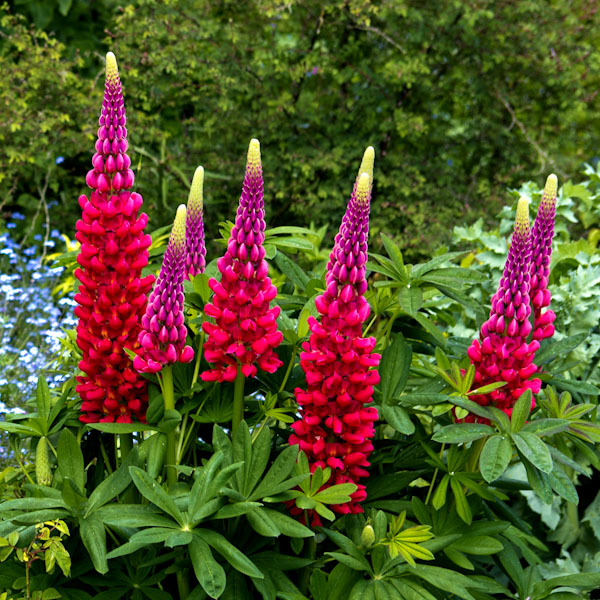Creating a garden that’s both beautiful and beneficial to local wildlife is a rewarding way to enhance your outdoor space. Wildlife-friendly perennials not only provide stunning seasonal color and texture but also attract pollinators like bees, butterflies, and birds that keep your garden thriving. These hardy plants return year after year, offering a low-maintenance way to support biodiversity and enjoy nature’s show. Here are ten breathtaking perennials that will turn your garden into a sanctuary for wildlife.
1. Echinacea (Coneflower)

Echinacea, commonly known as coneflower, is a beloved perennial known for its daisy-like blooms and resilience in various climates. Its vibrant, spiky centers surrounded by colorful petals are a magnet for bees and butterflies throughout summer and fall. Birds, especially finches, flock to its seed heads in late season, making it a year-round asset. These hardy plants thrive in full sun and well-drained soil, requiring little maintenance while adding bold pops of purple, pink, and white to your garden beds.
2. Black-Eyed Susan (Rudbeckia)

The cheerful golden-yellow petals of Black-Eyed Susans are a garden favorite and an irresistible source of nectar for pollinators. Their long-lasting blooms attract butterflies, while their seed heads in late fall provide food for birds. These perennials flourish in sunny spots and can tolerate poor soil, making them ideal for novice gardeners. The bright, daisy-like flowers add warmth to borders and wildflower gardens while offering critical sustenance to wildlife throughout the growing season.
3. Bee Balm (Monarda)

Bee Balm is a striking perennial prized for its bold, shaggy blooms in shades of red, pink, purple, and white. As its name suggests, it’s particularly attractive to bees, along with hummingbirds and butterflies. Its fragrant foliage also makes it a sensory delight in the garden. This native plant prefers sunny to partially shaded areas and moist, well-drained soil. Beyond its beauty, Bee Balm’s nectar-rich flowers provide essential support for pollinators during mid to late summer.
4. Milkweed (Asclepias)

Milkweed is a must-have perennial for any wildlife-friendly garden, particularly because it’s the primary host plant for Monarch butterflies. Its clusters of starry flowers range in hues from soft pink to vibrant orange and emit a pleasant fragrance that draws pollinators. Bees, butterflies, and other beneficial insects rely on its nectar, while Monarch caterpillars feed exclusively on its leaves. Planting Milkweed helps support declining butterfly populations while adding wild charm to your outdoor space.
5. Lupine (Lupinus)

With tall spires of densely packed, pea-like flowers, Lupines are a dramatic addition to any garden. Available in a spectrum of colors from soft pastels to rich jewel tones, they’re a favorite nectar source for bees, butterflies, and hummingbirds. These hardy perennials prefer cooler climates and well-drained soil, thriving in sunny or lightly shaded areas. In addition to their visual appeal, Lupines fix nitrogen in the soil, improving soil health and benefiting surrounding plants.
6. Joe-Pye Weed (Eutrochium purpureum)

Joe-Pye Weed might sound rustic, but its towering stems topped with clusters of pinkish-purple flowers make it a show-stopper in wildlife gardens. Blooming in late summer to early fall, it attracts clouds of butterflies, especially Eastern Tiger Swallowtails. Its vanilla-scented flowers are also favored by bees. Ideal for moist, fertile soil and full to partial sun, Joe-Pye Weed’s impressive height and lush foliage make it perfect for back borders or naturalized settings.
7. Blazing Star (Liatris spicata)

Blazing Star, also known as Gayfeather, is known for its unique, bottlebrush flower spikes in vivid shades of purple or white. Blooming from top to bottom, these vertical blooms create striking visual interest while luring butterflies and bees with their nectar-rich blossoms. Finches and other birds enjoy their seeds later in the season. Drought-tolerant and easy to grow, Blazing Star thrives in full sun and well-drained soil, making it a resilient and rewarding addition to any pollinator garden.
8. Yarrow (Achillea millefolium)

Yarrow’s flat-topped clusters of tiny flowers in colors ranging from white to deep crimson are a magnet for butterflies and beneficial insects. This hardy, drought-tolerant perennial is easy to grow in sunny, well-drained spots and offers long-lasting blooms throughout the summer. Its feathery, aromatic foliage adds delicate texture to garden beds. Beyond its visual and ecological benefits, Yarrow has a history of medicinal use, making it a valuable multi-purpose plant for any wildlife-friendly landscape.
9. Aster (Symphyotrichum)

Asters are late-season bloomers, providing vital nectar for pollinators when most other flowers have faded. Their starry, daisy-like flowers in shades of blue, purple, pink, and white attract bees, butterflies, and even migrating Monarchs preparing for their long journey south. Hardy and versatile, Asters thrive in a variety of soil conditions and prefer full sun to partial shade. They also serve as an important food source for birds in fall, thanks to their seed heads.
10. Coral Bells (Heuchera)

Coral Bells are treasured for their colorful foliage, ranging from deep burgundy to bright lime, and delicate bell-shaped flowers that rise on slender stalks in late spring to early summer. Hummingbirds adore their nectar-rich blooms, while the dense foliage offers shelter for small beneficial insects. These perennials thrive in partial shade, making them ideal for woodland or shaded border gardens. With both visual and ecological appeal, Coral Bells are a charming and useful addition to any wildlife-friendly outdoor space.





Leave A Comment